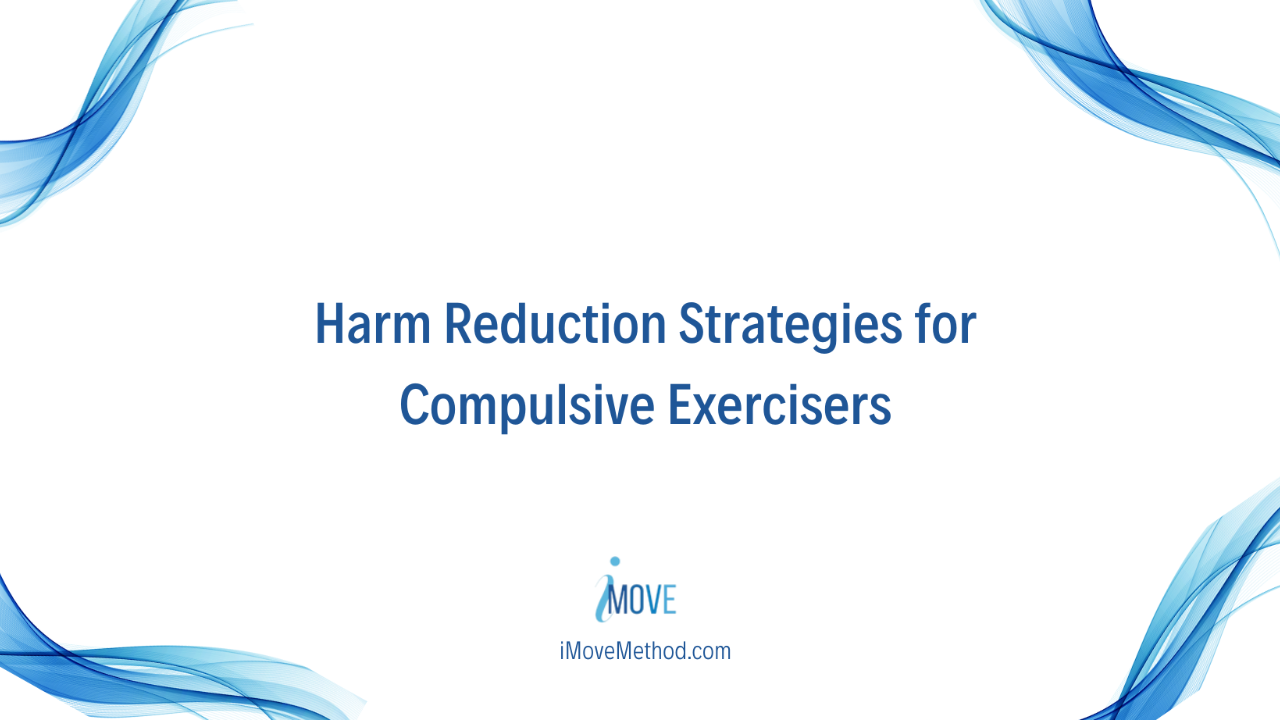Harm Reduction Strategies for Compulsive Exercisers
Jun 23, 2023
Harm reduction strategies to use with clients who can't stop exercising.
Many individuals who struggle with compulsive exercise have complex trauma history. Connection to the body doesn’t feel safe and intense exercise is an attempt to “run away” from and numb internal experiences. Often, individuals describe the pain of excessive exercise being preferable to the trauma symptoms they experience at rest.
When exercise is not safe or recommended but you know your client is going to do it anyway, it’s important to consider harm-reduction strategies.
In these situations, I will say something like this:
“I don’t endorse you exercising right now and it’s not safe but I recognize you are likely going to do it anyway. Can we explore some ways you can minimize harm when you are exercising?”
Here are some ways you can minimize harm when exercising is not safe
- Carry quick source of glucose/ fuel (candy, juice, glucose tabs, gel)
- Make sure phone is charged and carry it when exercising
- Wear ID bracelet with emergency contact information
- Limit exercise to contained public spaces (track, gym, yoga studio, etc.)
- Avoid exercising outside in the dark or in areas with a lot of car traffic
- Avoid exercising in remote areas where people are less likely to travel
- Let a loved one know where you are (i.e., allow tracking on phone)
- Exercise with another person
- Monitor heartrate during exercise and establish a rate that minimizes risk
- Stop if any negative symptoms emerge
*This is not an exhaustive list and you will want to individualize it for your client(s)
What are the benefits of using a harm-reduction approach with clients?
Benefits of using a harm reduction approach with clients who can not commit to changing their behavior(s) at the moment is that it’s trauma-informed and collaborative. Clients feel held and supported even when not doing treatment the “right” way. For additional exploration of the harm-reduction approach to eating disorder treatment, I highly recommend you check out Gloria Lucas’ work at Nalgona Positivity Pride.
Compulsive exercise is a common component of eating disorders.
It's often the first presenting behavior and the last to go. It can be a precursor to relapse following eating disorder treatment and often goes unexplored in higher levels of eating disorder care.

If you want to start helping clients heal from compulsive exercise and have not yet downloaded my free guide with a 3 step process that makes it easier to do this. Get your copy here.
If you are interested in learning more about how you can become certified in the iMove Method® training, book a call with me and we can review any questions you have about adding this training and service to your practice. You can book a time with me via my online calendar.


